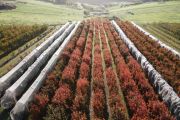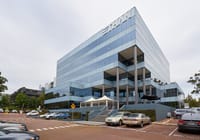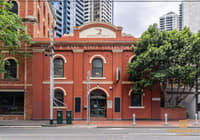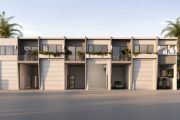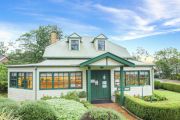
Property developers lick their lips over $1.2b SAS base in Perth
Western Australia-based developer and former Rich Lister Nigel Satterley says the elite Special Air Services base in Perth’s leafy inner-western suburbs is one Defence Department property that could be used for much-needed housing.
Property sources said the base could be worth up to $1.2 billion in land value alone.

Satterley told AFR Weekend the 236-hectare Campbell Barracks in the suburb of Swanbourne – across the road from Cottesloe Golf Course – was a “very, very prime site”.
Satterley, who declined to put a value on the base and training ground just 10 kilometres from the CBD, which includes a military firing range, barracks and leased beach area, said the site would need a developer large enough to take it on.
“We’d be very, very interested,” he said. “There would only be a handful of people that could digest that.”
The military base is not up for sale, but is one asset in an extensive Defence portfolio that has long attracted developers. The federal government’s upcoming response to an audit of Defence-owned properties will give a clue about its future.
“There are a number of properties within the Defence estate which really [are] part of something in the past and not necessarily focused on the future,” Defence Minister Richard Marles said in parliament this week. “We will be in a position to respond to that audit in the very near future.”
Defence, with 2.8 million hectares of land in Australia, 70 major bases, 28 airfields, 72 training areas, 61 wharves and other maritime structures, is one of the country’s largest landowners and regularly reviews its portfolio and disposes of real estate assets it no longer needs.

In February, it sold 18 individually titled residential lots in the inner west of Sydney – the site of the former Haberfield Army Reserve Depot – for more than $44 million. That averaged to $2.44 million per lot.
“It was very welcomed by the home-buying community as it freed up multiple lots for people to build new houses very close to the CBD,” said McGrath Estate Agents agent Michael Tringali. “The pricing achieved exceeded expectations due to the shortage of supply and abundance of demand for such a limited resource.”
Some deals are more complex. In 2023, the department gave the South Australian government’s development agency two sites – including a 12.8-hectare site at Keswick on the Adelaide city fringe – to turn into housing. In that deal, the department took an extra 64 hectares of state land to expand the Osborne shipyard for the AUKUS submarine program.
The country’s chronic housing shortage is stoking interest in well-located Defence land such as Victoria Barracks in eastern Sydney – creating new flashpoints in the NIMBY versus YIMBY wars.
Some surplus Defence sites are costly to redevelop as they have contamination from weapons and PFAS fire-fighting chemical residues, such as the 127.8-hectare former Maribyrnong Defence Site in Melbourne, which the government put on the market in 2018 and has not yet been sold.
In Perth, industry sources said land in Swanbourne could be worth about $5 million per hectare, giving the Campbell Barracks site a nominal value of $1.18 billion. But this was unlikely to be realised, as parts of it would never be developable.
Federal and state political leaders have in the past been quick to rule out redeveloping Campbell Barracks.
Former prime minister John Howard reportedly ruled it out in 2007, saying the SAS, which had to fight wars and train, “shouldn’t be filling out forms as to why they are surplus”. In 2016, the ABC reported that then-Curtin MP Julie Bishop said it would not be redeveloped as long as the Coalition was in power.
Former Cottesloe MP and West Australian premier Colin Barnett on Friday called the idea a “non-event”, saying it would be too costly to move facilities contained within the SAS base.
“That’s not going to happen,” he told AFR Weekend. “The infrastructure and technology in that site would be worth several billions of dollars. There’s all sorts of incredible and crazy training there.”
Satterley remained optimistic.
“I don’t think it is that constrained,” he said. “There might be a bit of a clean-up of things, but not a big deal.”

